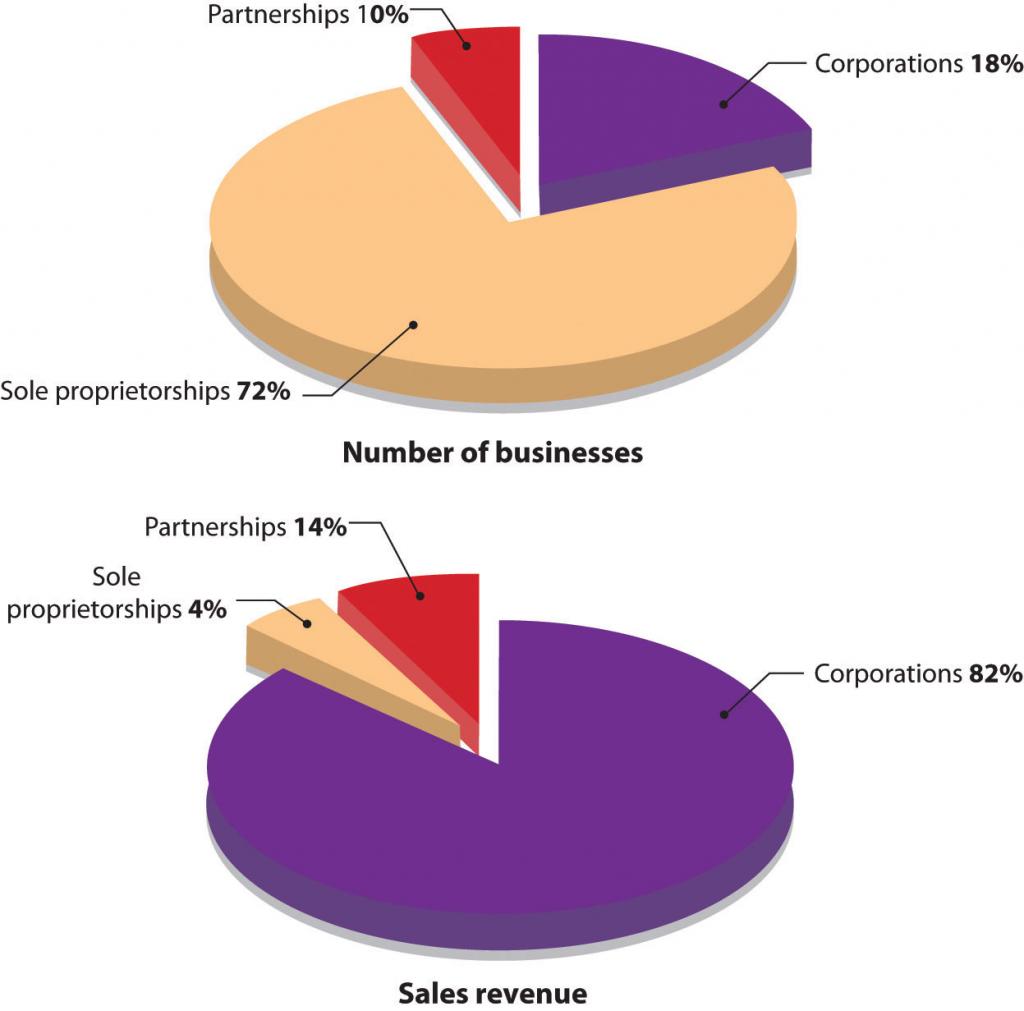4.4: Corporation
- Page ID
- 3997
Learning Objectives
- Explain how corporations are formed and how they operate.
- Discuss the advantages and disadvantages of the corporate form of ownership.
A corporation (sometimes called a regular or C-corporation) differs from a sole proprietorship and a partnership because it’s a legal entity that is entirely separate from the parties who own it. It can enter into binding contracts, buy and sell property, sue and be sued, be held responsible for its actions, and be taxed. As Figure 4.5 “Types of U.S. Businesses” shows, corporations account for 18 percent of all U.S. businesses but generate almost 82 percent of the revenues (The National Data Book, 2011). Most large well-known businesses are corporations, but so are many of the smaller firms with which you do business.
Figure 4.5 Types of U.S. Businesses

Source: “Number of Tax Returns, Receipts, and Net Income by Type of Business,” The 2011 Statistical Abstract: The National Data Book, www.census.gov/compendia/stat...porations.html (accessed August 27, 2011); “Number of Tax Returns and Business Receipts by Size of Receipts,” The 2011 Statistical Abstract: The National Data Book, www.census.gov/compendia/stat...porations.html (accessed August 27, 2011).

